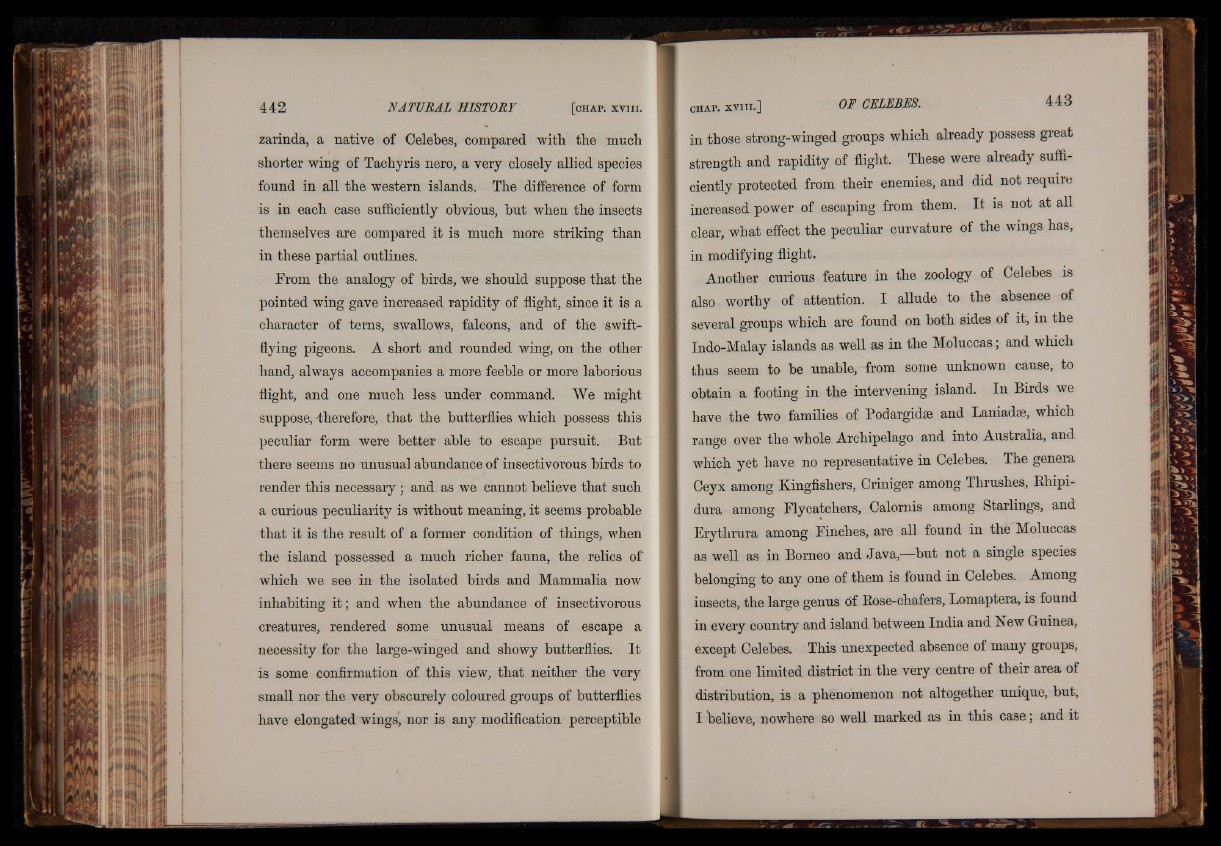
zarinda, a native of Celebes, compared with the much
shorter wing of Tachyris nero, a very closely allied species
found in all the western islands. The difference of form
is in each case sufficiently obvious, but when the insects
themselves are compared it is much more striking than
in these partial outlines.
From the analogy of birds, we should suppose that the
pointed wing gave increased rapidity of flight, since it is a
character of terns, swallows, falcons, and of the swift-
flying pigeons. A short and rounded wing, on the other
hand, always accompanies a more feeble or more laborious
flight, and one much less under command. We might
suppose, -therefore, that the butterflies which possess this
peculiar form were better able to escape pursuit. But
there seems no unusual abundance of insectivorous birds to
render this necessary; and as we cannot believe that such
a curious peculiarity is without meaning, it seems probable
that it is the result of a former condition of things, when
the island possessed a much richer fauna, the relics of
which we see in the isolated birds and Mammalia now
inhabiting it; and when the abundance of insectivorous
creatures, rendered some unusual means of escape a
necessity for the large-winged and showy butterflies. It
is some confirmation of this view, that neither the very
small nor the very obscurely coloured groups of butterflies
have elongated wings, nor is any modification perceptible
in those strong-winged groups which already possess great
strength and rapidity of flight. These were already sufficiently
protected from their enemies, and did not require
increased power of escaping from them. It is not at all
clear, what effect the peculiar curvature of the wings has,
in modifying flight.
Another curious feature in the zoology of Celebes is
also worthy of attention. I allude to the absence of
several groups which are found on both sides of it, in the
Indo-Malay islands as well as in the Moluccas; and which
thus seem to be unable, from some unknown cause, to
obtain a footing in the intervening island. In Birds we
have the two families of Podargidse and Laniadse, which
range over the whole Archipelago and into Australia, and
which yet have no representative in Celebes. The genera
Ceyx among Kingfishers, Criniger among Thrushes, Bhipi-
dura among Flycatchers, Calornis among Starlings, and
Erythrura among Finches, are all found in the Moluccas
as well as in Borneo and Java,—but not a single species
belonging to any one of them is found in Celebes. Among
insects, the large genus df Bose-chafers, Lomaptera, is found
in every country and island between India and New Guinea,
except Celebes. This unexpected absence of many groups,
from one limited district in the very centre of their area of
distribution, is a phenomenon not altogether unique, but,
I believe, nowhere so well marked as in this case; and it